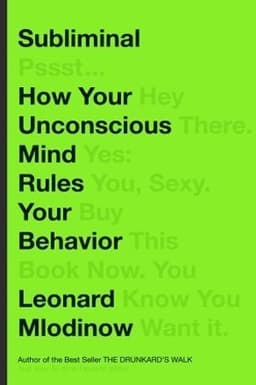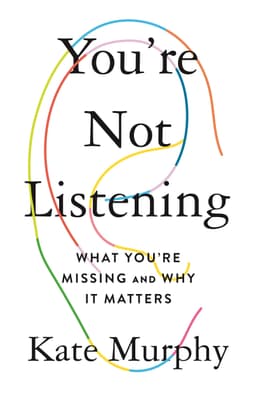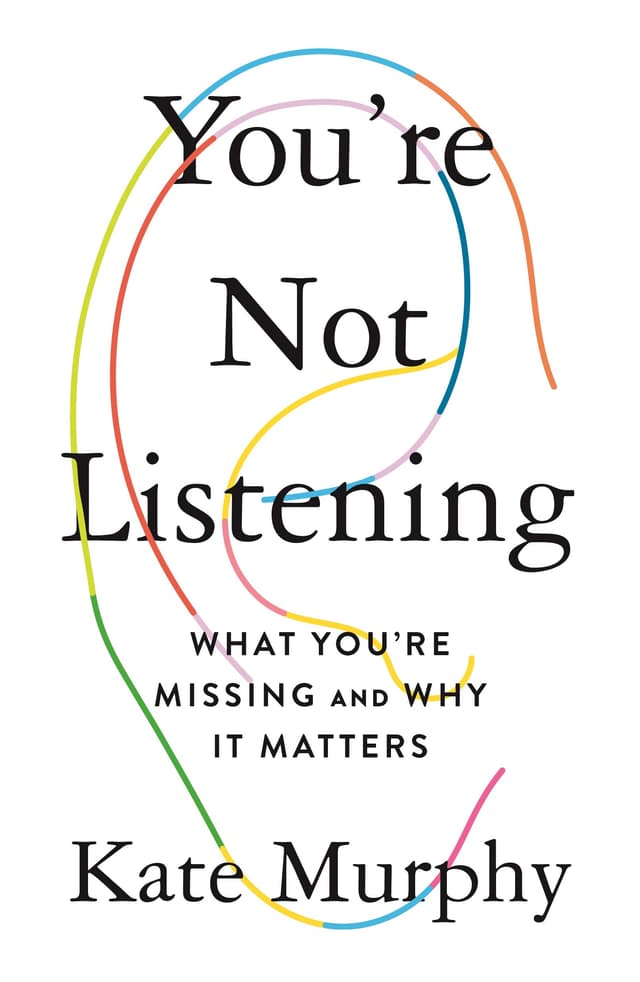
Subliminal Book Summary
How Your Unconscious Mind Rules Your Behavior
Book by Leonard Mlodinow
Feeling Lazy?Read 1 Minute Summary
Summary
Subliminal: How Your Unconscious Mind Rules Your Behavior reveals the powerful influence of the unconscious mind on our thoughts, feelings, and actions - from how we perceive the world, to how we interact with others, make decisions, and understand ourselves.
Sign in to rate
Average Rating: 4.67
Part 1
The Power Of The Unconscious Mind
Chapter 1 introduces the concept of the "new unconscious" - the idea that much of our mental processing occurs outside of our conscious awareness. This includes perceptions, feelings, thoughts and behaviors that are influenced by factors we are unaware of. The unconscious mind is crucial for our survival, handling the vast majority of the information our brains take in. Modern tools like fMRI allow scientists to study the unconscious in ways not possible before.
Section: 1, Chapter: 1
We Don't Consciously Perceive Everything
Be open to hunches and gut feelings, even if you can't explain their source. They may arise from unconscious perceptions and associations your conscious mind hasn't registered. Don't always assume your conscious reasoning captures the full picture.
Section: 1, Chapter: 1
The Two-Tiered Brain And Unconscious Visual Processing
Chapter 2 dives into how vision works as an example of the two-tiered conscious and unconscious processing in the brain. Much of the hard work of vision - like compensating for blind spots, saccades, and poor peripheral vision - happens automatically and unconsciously.
Conscious vision is more of a constructed model than a direct perception of reality. Studies of blindsight patients show visual processing can occur even when conscious awareness of vision is lost.
Section: 1, Chapter: 2
Our Brains Are Not Simply Recording A Taste Or Other Experience
"Our brains are not simply recording a taste or other experience, they are creating it. That's a theme we'll come back to again and again. We'd like to think that, when we pass up one guacamole in favor of another, it is because we have made a conscious choice based on taste, caloric content, price, our mood, the principle that guacamole should not contain mayonnaise, or any of a hundred other factors under our control. We believe that when we choose a laptop or a laundry detergent, plan a vacation, pick a stock, take a job, assess a sports star, make a friend, judge a stranger, and even fall in love, we understand the principal factors that influenced us. Very often nothing could be further from the truth."
Section: 1, Chapter: 2
Environmental Factors Like Packaging Unconsciously Influence Our Perceptions
Several studies show how unconscious factors influence our perceptions and judgments:
- Doubling the size of a snack food container increases consumption by 30-45%, even if the food tastes terrible. People aren't aware the container size is influencing them.
- Flowery menu descriptions cause people to rate the taste of food higher than identical food with generic descriptions.
- Difficult to read fonts make instructions seem harder to follow and exercises more challenging compared to easy to read fonts.
Section: 1, Chapter: 2
Memory Is Reconstructive, Not A Perfect Recording
Chapter 3 explains how memory works more through reconstruction than perfect retrieval. When recalling an event, we piece together incomplete fragments, filling in gaps based on our expectations, beliefs and prior knowledge. This process is prone to errors and distortions without us realizing it.
Comparisons of John Dean's Watergate testimony to tape recordings and of Dan Simons' 9/11 memories to what actually happened show how faulty even vivid, confidently-held memories can be. Memory researcher Frederic Bartlett proposed memories change over time to fit a more coherent narrative aligned with our understanding.
Section: 1, Chapter: 3
"We Don't Consciously Perceive Everything That Registers In Our Brain"
Psychologist Ulric Neisser outlined three key principles of how human memory works based on careful studies:
- We have good memory for the general gist of events but poor memory for details.
- When pressed for unremembered details, even well-intentioned people inadvertently fill in gaps by making things up.
- People believe the memories they create, even if inaccurate.
Section: 1, Chapter: 3
False Memories Feel Just As Real As True Ones
In a famous study, researchers were able to induce false memories in 50% of subjects that as children they had once been lost in a shopping mall, by having relatives recount the fictitious event to them. The "memories" subjects generated felt vivid and real to them. In other studies, subjects came to falsely remember events like being hospitalized overnight, or spilling a punch bowl at a wedding. This shows how readily false memories can be created through suggestion, while feeling indistinguishable from real memories.
Section: 1, Chapter: 3
The Unconscious Roots Of Human Social Behavior
Chapter 4 explores how unconscious processes shape our social interactions and relationships. Many of our social behaviors and emotional responses occur automatically, without conscious thought. This includes nonverbal communication, emotional contagion, and our tendency to categorize people into in-groups and out-groups.
The need for social connection and belonging is a fundamental human drive. Social pain, like rejection or exclusion, activates similar brain regions as physical pain. The unconscious mind enables the complex social coordination and cooperation that has allowed human civilization to flourish.
Section: 1, Chapter: 4
Tylenol Reduces The Neural Response To Social Rejection
In a remarkable study, researchers found that Tylenol (acetaminophen) reduced the pain of social rejection. Subjects took Tylenol or placebo daily for 3 weeks. Then they played a ball-tossing game while undergoing fMRI brain scans.
During the game, the other "players" (actually computer-controlled) began excluding the participant. For those who took Tylenol, both self-reported hurt feelings and neural responses to rejection in pain-related brain areas were significantly diminished compared to the placebo group. This suggests the brain processes social and physical pain similarly.
Section: 1, Chapter: 4
Part 2
Unconscious Nonverbal Communication Reveals Our True Feelings
Chapter 5 is all about how we communicate nonverbally and the impact it has on our interactions. Facial expressions, gestures, posture, eye contact, vocal tones and more transmit a wealth of often unconscious information about our true feelings and intent.
We automatically assess people's warmth, competence, and trustworthiness within seconds based on these nonverbal cues. Politicians, actors and influencers who are adept at controlling their nonverbal signals have a powerful advantage in shaping how others perceive them. But for most of us, our nonverbal communication leaks out involuntarily, revealing feelings we may be unaware of or trying to conceal.
Section: 2, Chapter: 5
We Judge People's Traits And Status By Their Voices
Be mindful of how your voice may shape others' perceptions of you, even if what you're saying is on point. Studies show people judge voices that are lower-pitched, more expressive and faster as more commanding, authoritative and intelligent. Monotone or slow talkers are seen as dull or unsure, even if their content is identical.
Women in leadership can face particular challenges, as a deeper voice is seen as more "masculine" and authoritative. The good news is voice is trainable - both Margaret Thatcher and George W. Bush worked with coaches to sound more leaderly to great effect.
Section: 2, Chapter: 5
A Light Touch Can Be A Powerful Influencer
Numerous studies demonstrate the unconscious power of touch to shape behavior and perceptions. For example:
- Waiters who lightly touched customers on the arm or shoulder as they returned change received significantly higher tips than those who avoided contact.
- People were twice as likely to sign a petition or fill out a survey if the requester quickly touched their arm.
- Basketball teams whose players touched each other more (high fives, fist bumps, hugs, etc.) had higher performance, controlling for individual talent.
Section: 2, Chapter: 5
We Unconsciously Categorize People Into "Us" Vs. "Them"
Chapter 6 examines how our unconscious propensity to categorize people into "in-groups" and "out-groups" shapes our perceptions and behaviors. We automatically and unconsciously favor those we see as part of "us" and are more suspicious of "them."
Even arbitrary distinctions, like randomly assigning people to a "red" or "blue" team, elicits in-group favoritism. Numerous studies show how quickly and easily group identities form and lead to distorted perceptions, biased judgments, double-standards, and discrimination - often without any awareness it is happening.
Understanding this unconscious dynamic is key to navigating a diverse social world.
Section: 2, Chapter: 6
The Effect of In- and Out-Group Categories
"Putting ourselves into in- and out-group categories also has an effect—on the way we see our own place in the world and on how we view others. In what follows we'll learn what happens when we use categorization to define ourselves, to differentiate 'us' from others."
Section: 2, Chapter: 6
Overcoming "Us Vs. Them" Thinking
While in-group favoritism and out-group bias is natural, it can be overcome. Steps include:
- Increase awareness of your own us/them perceptions. Notice how quickly you slot people into categories and judge accordingly.
- Make an effort to individuate members of out-groups and see their full humanity, rather than stereotyping.
- Actively work to expand your in-group and emphasize shared identities. Research shows even arbitrary commonalities can elicit in-group affiliation.
- Create opportunities for rival groups to work together on shared goals. This was shown to reduce hostilities between competitive groups of boys at summer camp in classic Robbers Cave experiments.
Section: 2, Chapter: 6
The Unconscious Reasons Behind Our Choices And Behaviors
Chapter 7 delves into how unconscious factors shape our decision-making and behaviors, often without our awareness. We may think we are making rational choices, but studies show unconscious biases, environmental cues, and social influences have a powerful sway.
For example, priming people with words related to the elderly causes them to walk more slowly afterwards. Holding a warm cup of coffee leads people to judge others as having a "warmer" personality. Stereotypes about gender, race, age, and other social categories unconsciously affect our perceptions and behaviors, even among those who consciously reject such stereotypes.
Section: 2, Chapter: 7
The Implicit Association Test Reveals Hidden Biases
The Implicit Association Test (IAT) is a tool used by psychologists to measure unconscious attitudes and beliefs. It works by measuring how quickly and accurately people categorize words and images that fit or defy stereotypes. For instance, an IAT on gender and career might ask people to rapidly sort words like "male," "female," "executive," and "homemaker."
Most people are faster and make fewer errors when the pairings fit stereotypes (e.g. male/executive) versus when they are mismatched (e.g. female/executive). This occurs even for people who consciously espouse egalitarian views. The IAT reveals the pervasiveness of unconscious biases.
Section: 2, Chapter: 7
Emotions Are More Than Just Conscious Feelings
Chapter 9 presents a "dual-process" theory of emotion. Our emotional experiences arise from two parallel brain systems:
- Conscious feelings, thoughts and perceptions
- Unconscious physiological arousal, like a racing heart or sweaty palms
Our mind integrates both streams of data, along with the surrounding context, to construct an overall emotional state. But we don't have direct conscious access to the causes of our physiological arousal.
This means the same state of arousal can be interpreted as different emotions depending on the situation and our beliefs. It also means our conscious reasons for our feelings are often post-hoc rationalizations rather than accurate insights.
Section: 2, Chapter: 9
Misattributing Arousal Can Lead To Mistaken Emotions And Decisions
In a famous study, male subjects met an attractive female interviewer on either a scary suspension bridge or a stable bridge. The men on the scary bridge were more likely to mistake their physiological arousal (racing heart, sweaty palms, etc) as attraction to the interviewer and call her later for a date. Their conscious minds didn't realize their arousal stemmed from the bridge, not the woman.
Another study found subjects rated erotic pictures as more appealing after vigorous exercise, again mistaking the source of their physiological arousal. Emotions, and the decisions they fuel, arise from many unconscious influences beyond the obvious.
Section: 2, Chapter: 9
We Confabulate Reasons For Our Feelings, Choices And Beliefs
Be skeptical of the quick explanations your mind generates for your emotions, behaviors and judgments. Chances are your conscious reasons are a confabulated narrative rather than true introspection. This doesn't mean your intuitions are necessarily wrong, just that your conscious justifications for them are suspect.
Try to notice the subtle cues, contexts and contingencies that may be unconsciously swaying you. Cultivating mindfulness of your moment-to-moment experiences can yield wiser insights than simply assuming your rationalized reasons are the full story.
Section: 2, Chapter: 9
The Unconscious Mind Influences Even Our Sense Of Self
Chapter 10 shows how unconscious processes shape our self-concepts, self-esteem, and self-serving biases. We construct our identities through an automatic "narrative self" that filters our memories and perceptions to maintain a cohesive, positive self-image.
Conscious reasoning takes a backseat to unconscious rationalization and motivated cognition when it comes to the self. For example, we take credit for our successes but blame failures on external circumstances. We selectively remember evidence that confirms our self-image and forget or discount contradictory data. These self-serving biases are a universal feature of the human mind, not a sign of individual delusion.
Section: 2, Chapter: 10
The Psychological Immune System": How We Maintain Positive Illusions
Psychologists have identified a number of automatic, unconscious strategies the mind uses to defend our self-concept against threats and negative feedback:
- Self-serving attributions: Taking credit for success, blaming failure on external factors
- Selective attention and memory: Focusing on and remembering positive feedback, forgetting or ignoring criticism and bad outcomes
- Downward social comparison: Comparing ourselves to others worse-off to feel superior
- Confirmation bias: Seeking information that supports our existing self-views and ignoring contrary evidence
- Cognitive dissonance reduction: Reinterpreting events and choices to minimize regret and maintain consistency
Section: 2, Chapter: 10
Positive Illusions About The Self Have Benefits
Having an overly positive self-view isn't necessarily maladaptive or delusional - it confers a number of psychological benefits. People with higher self-esteem, even if partially inflated, tend to be happier, healthier, more socially successful and more resilient in the face of stress and adversity.
Maintain a hopeful growth mindset about your abilities rather than a defeatist fixed one. At the same time, try to keep your self-serving biases in check by soliciting honest feedback from trusted others and checking your intuitions against real-world results. Strike a balance between self-confidence and self-honesty for optimal growth.
Section: 2, Chapter: 10
Related Content


You're Not Listening
Kate Murphy
In You're Not Listening, Kate Murphy illuminates the profound power of listening to enrich our relationships and unlock our creative potential, while offering penetrating insights and practical tips to help us reclaim this lost art in our distracted, disconnected modern lives.
In You're Not Listening, Kate Murphy illuminates the profound power of listening to enrich our relationships and unlock our creative potential, while offering penetrating insights and practical tips to help us reclaim this lost art in our distracted, disconnected modern lives.
Communication
Relationships
Personal Development

